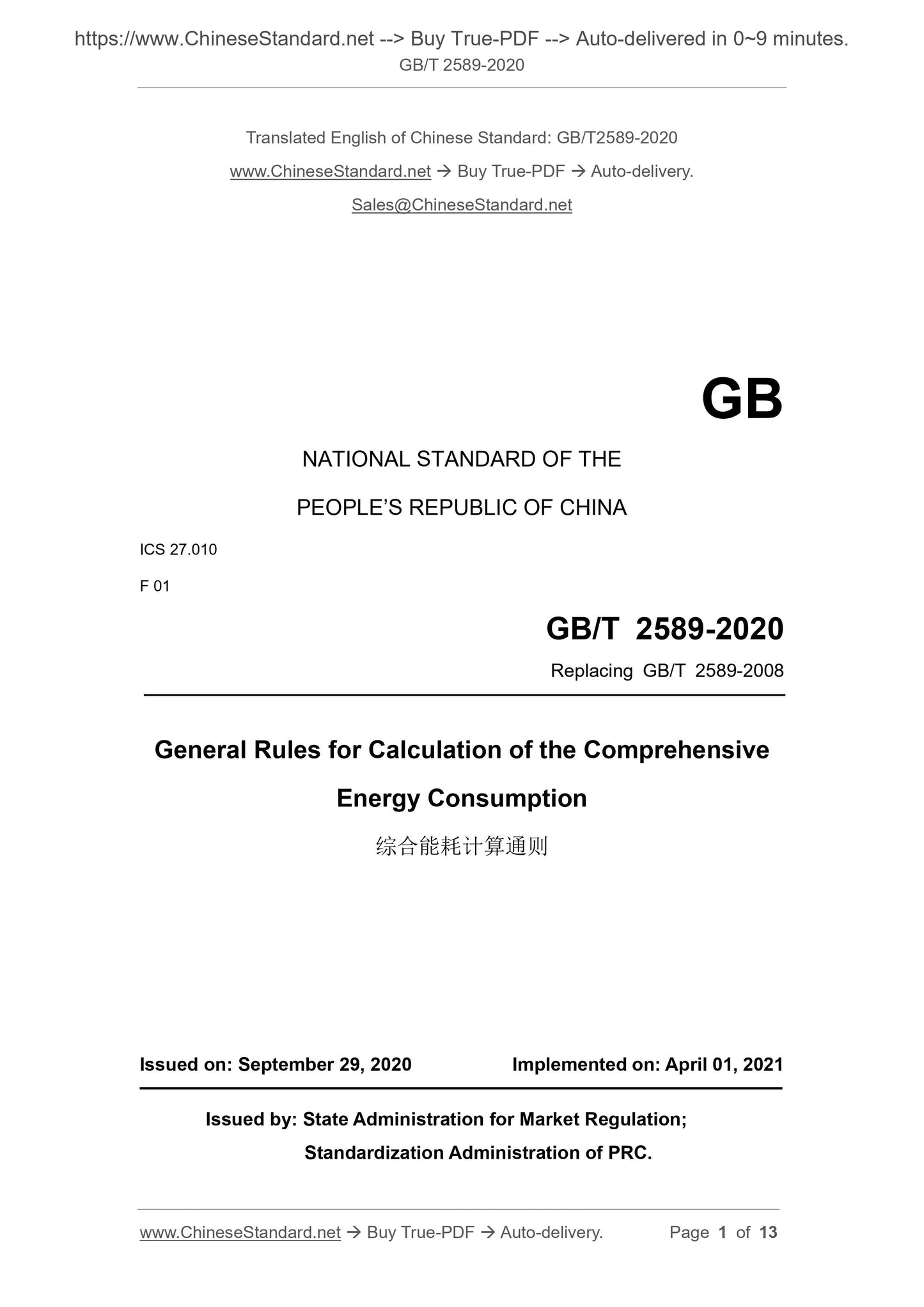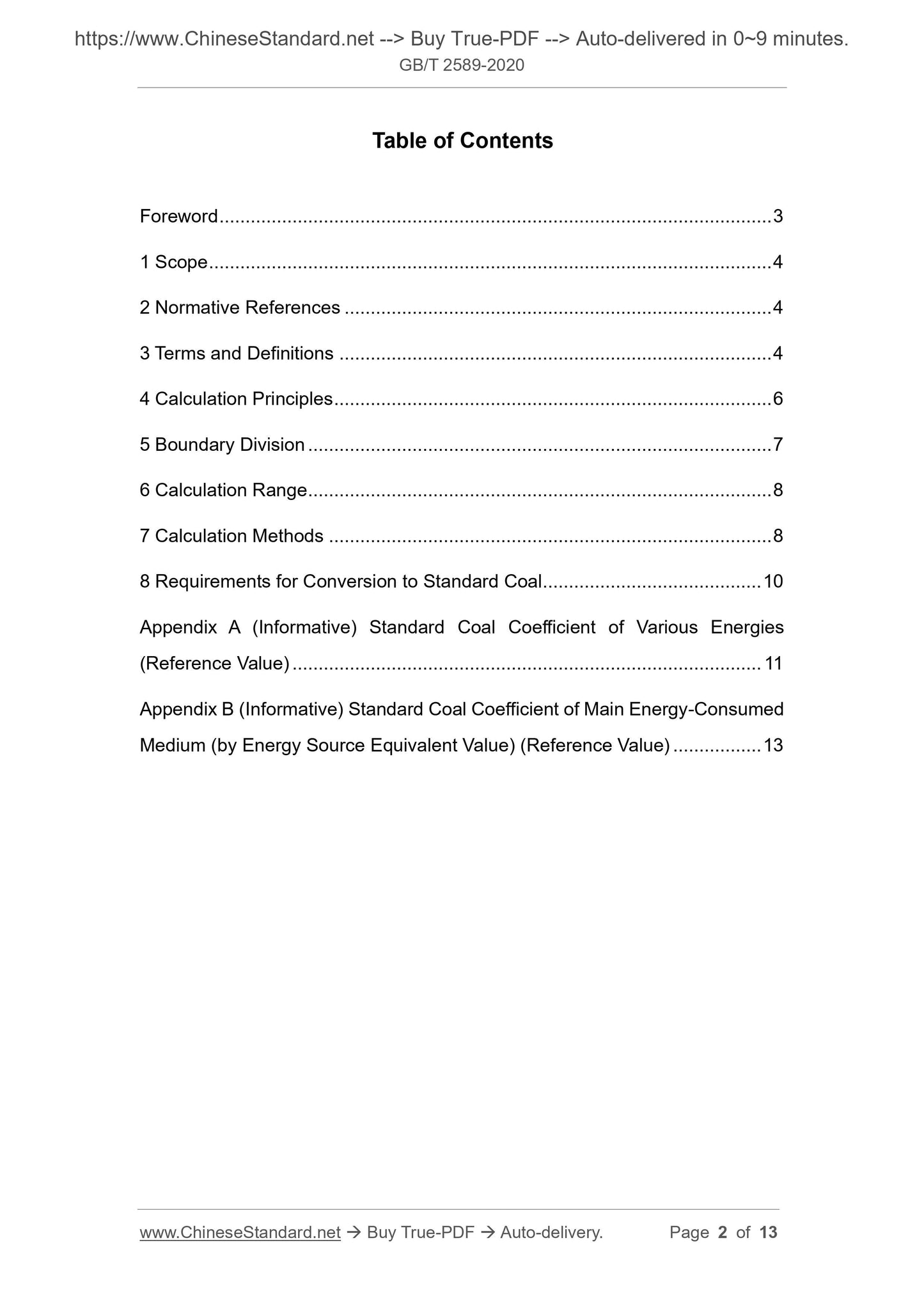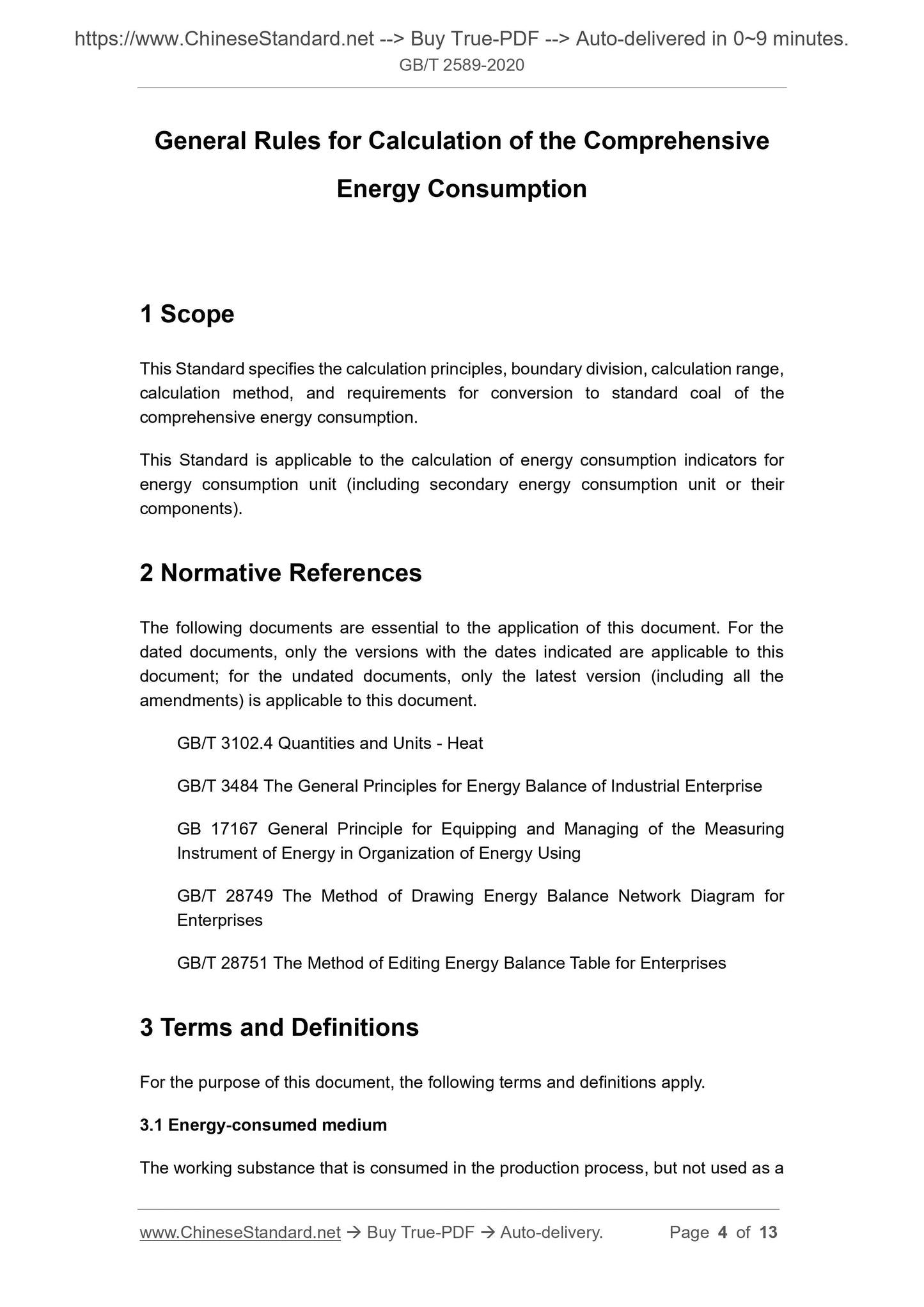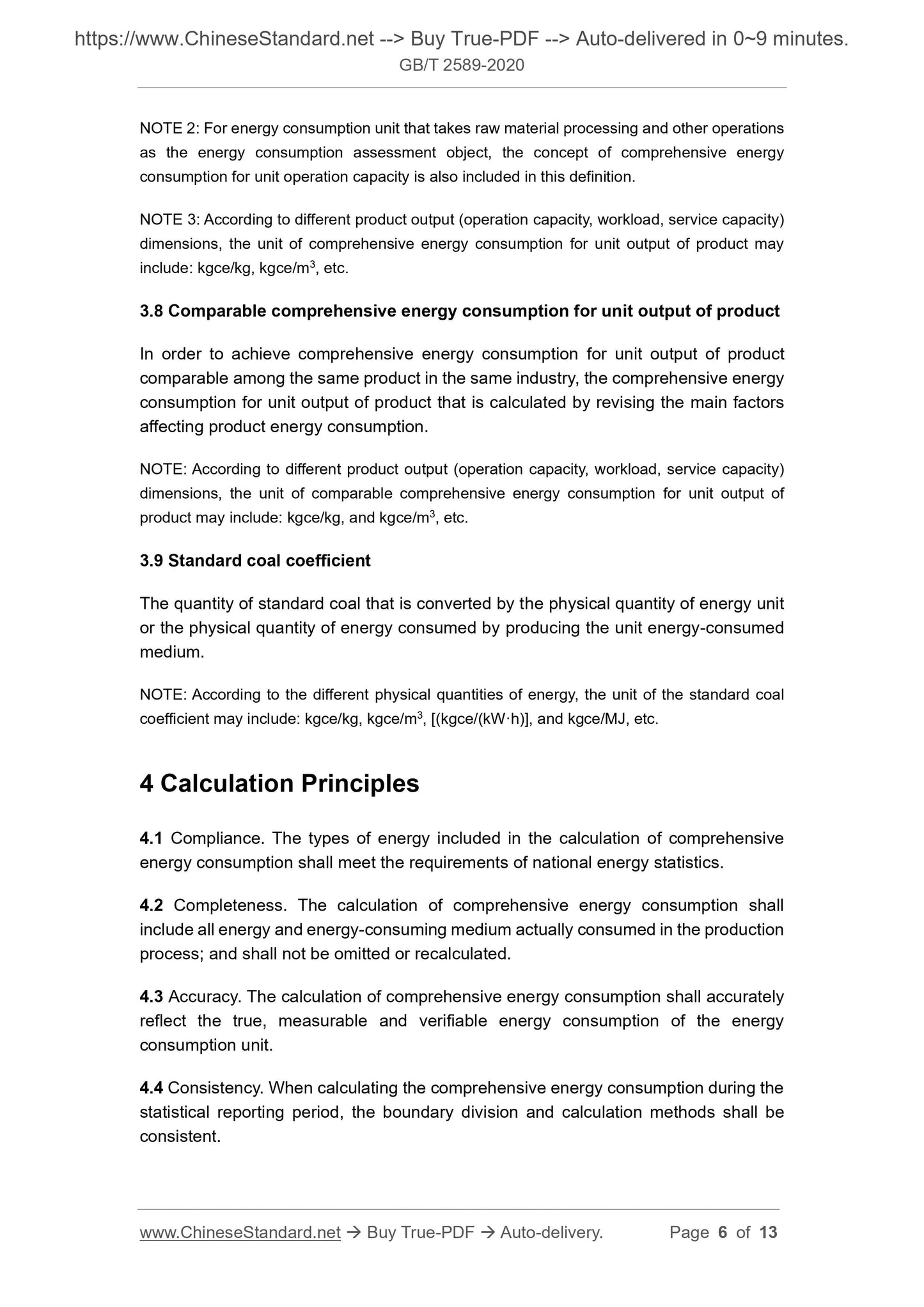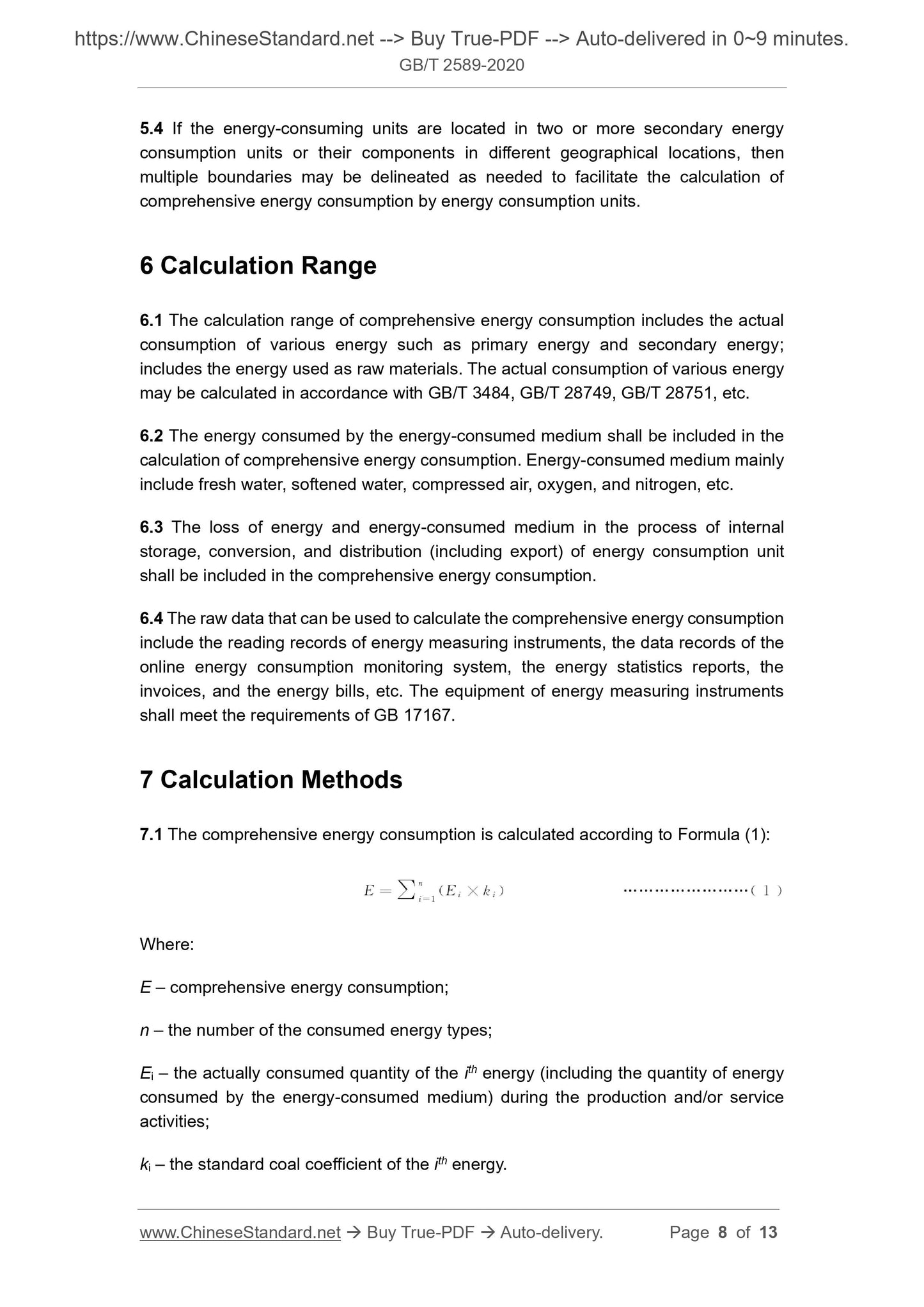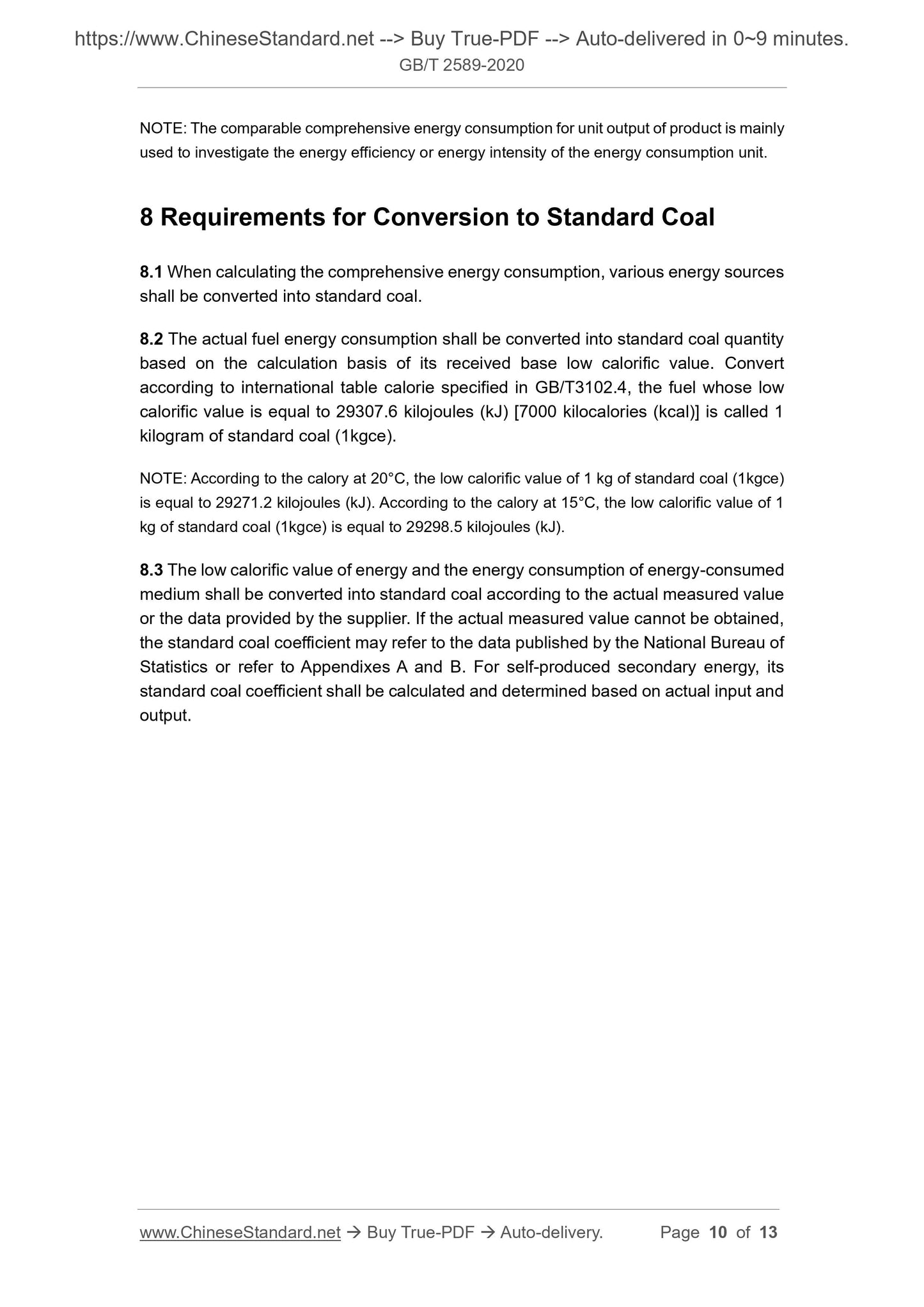1
/
of
6
www.ChineseStandard.us -- Field Test Asia Pte. Ltd.
GB/T 2589-2020 English PDF (GB/T2589-2020)
GB/T 2589-2020 English PDF (GB/T2589-2020)
Regular price
$155.00
Regular price
Sale price
$155.00
Unit price
/
per
Shipping calculated at checkout.
Couldn't load pickup availability
GB/T 2589-2020: General Rules for Calculation of the Comprehensive Energy Consumption
Delivery: 9 seconds. Download (and Email) true-PDF + Invoice.Get Quotation: Click GB/T 2589-2020 (Self-service in 1-minute)
Newer / historical versions: GB/T 2589-2020
Preview True-PDF
Scope
This Standard specifies the calculation principles, boundary division, calculation range,calculation method, and requirements for conversion to standard coal of the
comprehensive energy consumption.
This Standard is applicable to the calculation of energy consumption indicators for
energy consumption unit (including secondary energy consumption unit or their
components).
Basic Data
| Standard ID | GB/T 2589-2020 (GB/T2589-2020) |
| Description (Translated English) | General Rules for Calculation of the Comprehensive Energy Consumption |
| Sector / Industry | National Standard (Recommended) |
| Classification of Chinese Standard | F01 |
| Classification of International Standard | 27.010 |
| Word Count Estimation | 10,134 |
| Date of Issue | 2020-09-29 |
| Date of Implementation | 2021-04-01 |
| Older Standard (superseded by this standard) | GB/T 2589-2008 |
| Regulation (derived from) | National Standard Announcement No. 20 of 2020 |
| Issuing agency(ies) | State Administration for Market Regulation, China National Standardization Administration |
Share
